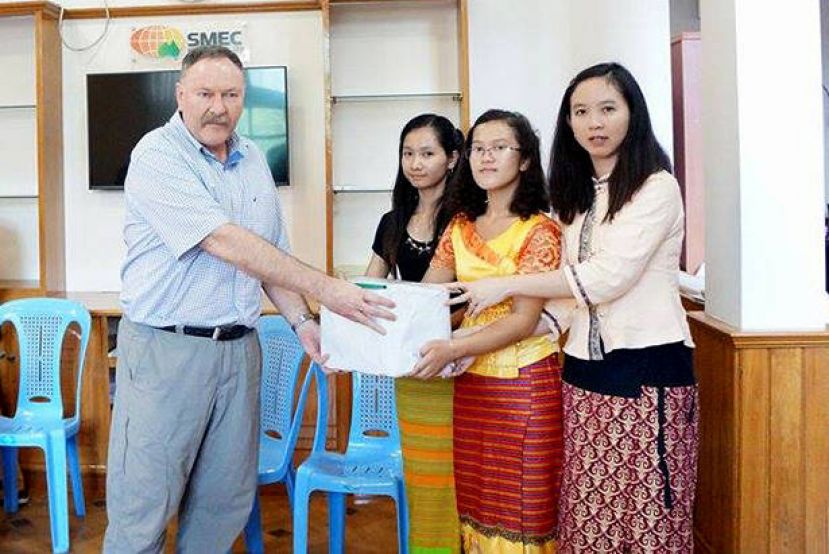THAILAND is preparing to sign a tripartite electricity-trading agreement with two neighbouring countries at the upcoming Asean Ministers of Energy Meeting.
Tag: Mong Ton dam
“My Spirit is There”: Life in The Shadow of The Mong Ton Dam
Before reaching the Keng Kham valley, the bright green Pang river, the Salween’s major tributary running south through central Shan state, splits into three parallel rivers that form myriad channels creating islands and islets, blurring the line between forests and water in a pristine and biodiverse riverscape. Rarely seen by outsiders, these are the famed “thousand islands,” forming a stunning inland delta that gives the “Kunhing” township its name. To the south, the Pang meets the Salween in a cascade of waterfalls. Seen from the air, white water tumbles down through verdant forested islands on an escarpment hundreds of meters long.
Activists Protest Mong Ton Dam Project
Members of the Save the Salween Network gathered at Wan Sala village in Shan state to mark International Rivers Day and voice their opposition to a series of six dams set to be built on the SalweenRiver, also known as the Thanlwin River. Of particular concern to the group of environmentalists and concerned citizens is the Mong Ton dam project, which if constructed in Shan State is expected to be South East Asia’s largest dam.
Shan and Karen CSOs strongly oppose Salween Dam
Villagers and CSOs from Shan State and Karen State on 10 March protested against the Mong Ton hydropower project during the first public consultation meeting held by the Australian consulting firm, the Snowy Mountain Engineering Corporation (SMEC) in Taunggyi, Shan State.
Over 23,000 Shan State Residents Sign Petition Against Salween Dams
Sai Aw Shan community representatives who organised a petition opposing the construction of the Mong Ton (Tasang) Dam on the Salween (Thanlwin) River have collected the signatures of 23,717 Shan State citizens. The petition was delivered to the Yangon office of the Snowy Mountains Engineering Corporation (SMEC), the Australian consulting firm responsible for conducting environmental […]






